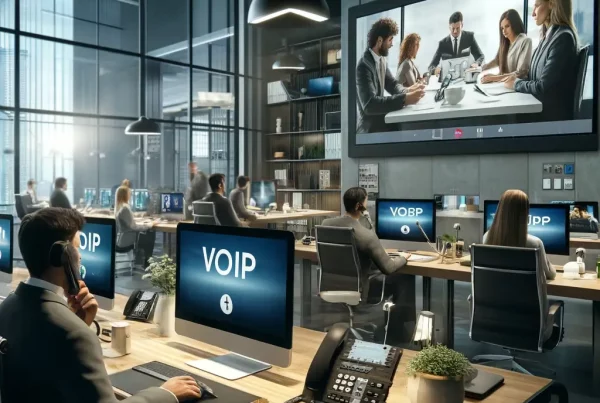A CCTV system has several essential parts: the cameras, the monitoring station, software to control the system, cables and a power supply, a recording device and data storage.
Modern equipment can replace parts of this by embedding them. For example, CCTV cameras can have memory sticks embedded in them, and a SIM to stream their data to a backup in the cloud. Artificial Intelligence can do the job of the monitoring station and send automatic alerts when pre-set events happen, such a specific face appearing or someone vaping.
This can make systems seem more confusing than they really are. If you understand the basic parts any system needs, it’s easy to figure how the modern adaptations fit into the complete picture of a CCTV system.
A Closed-Circuit Television (CCTV) system
The system consists of several components that work together to capture, transmit, and record video surveillance footage.
The Star of the CCTV System: Cameras
CCTV cameras capture video footage of the area being monitored. There are different types of cameras available, such as dome cameras, bullet cameras, and PTZ (Pan-Tilt-Zoom) cameras, each with their unique features and capabilities. Old analogue CCTV cameras still exist, but the preferred choice is IP cameras nowadays, as they are compatible with most devices.
We supply any shape of camera. Your choice will depend on the lighting conditions, your budget, and whether you want the cameras to be hidden or prominently seen. Do you want hidden cameras, or a or clear deterrent? Schools and some companies want their CCTV cameras to be discreet and hard to see, whereas most business premises what theirs to be highly visible as a deterrent to burglars and any other potential intruders.
You should also consider how many angles you want to cover, and the resolution or detailing you need. Our professional CCTV installers will make sure your cameras are covering the areas that you need covered with no blind spots or bad reflections.
The Monitoring Station – starting to be replaced by AI CCTV systems
A monitor displays the live video footage captured by the cameras. A traditional monitoring station may be a single monitor or bank of monitors to view recorded images and footage. How many monitors you’ll need depends on which areas you are monitoring and what you need to see. Three to five screens are plenty unless you have a large-scale facility. If your needs change, our CCTV installers can easily add or remove compatible monitors at any time.
New AI systems do the monitoring for you, can look out for specific people by face or clothing, and can send alerts. You can even set them to create backups when these significant events happen. You’ll never stop needing a dashboard, though – because this is where you configure the automated monitoring!
Software
Some CCTV systems may come with software that allows you to manage and view the video footage remotely. The software may include features such as motion detection, facial recognition, and remote access.
Cables and Routers
The cameras are connected to a recording device or monitor through cabling. The most common types of cables used in CCTV systems are coaxial cables and Ethernet cables. You need cabling regardless of whether your CCTV camera is a wired one or a plug-and-play.
The supporting equipment we will need to integrate into your system will depend on the type of surveillance system and cameras you choose. These can include additional cables to support bandwidth and routers if you have a wireless system.
We’ll identify the ideal cables, and so on, after agreeing on the cameras and monitors you’re going to use.
A Power Supply
The CCTV system requires a power supply to power the cameras, recording device, and other components.
Recording Device
The recording device stores the video footage captured by the cameras. There are two types of recording devices: Digital Video Recorder (DVR) and Network Video Recorder (NVR). A DVR records analog video signals, while an NVR records digital video signals.
CCTV System Data Storage
The video footage captured by the cameras is stored on the recording device’s hard drive. The amount of storage required depends on the number of cameras, the video quality, and the duration of storage needed.
Your CCTV security system is only as good as the hard disk backing it. Many CCTV installers only do camera systems, but we are first and foremost an IT company that designs networks and manages data storage and cyber security.
We’ll make sure you have robust cloud storage capacity and software. This will be able to record, store and re-play videos non-stop from multiple feeds. We’ll set it up to mesh seamlessly with your existing data storage solutions. What’s more, we can make sure it’s safely backed up and protected from malware – this is an add-on service.
Nowadays these are being increasingly replaced by internal memory which is embedded inside the camera. This alse streams to a cloud backup in case criminals vandalise the camera, destroying the momory device. For some purposes, internal memory doesn’t give you enough storage capacity – there’s always a playoff between HD video quality vs. the number of hours’ footage you can save.
Need help with a CCTV System?
Our CCTV installers can design, install and support all five parts of your CCTV system, or upgrade parts of it using your existing infrastructure.



